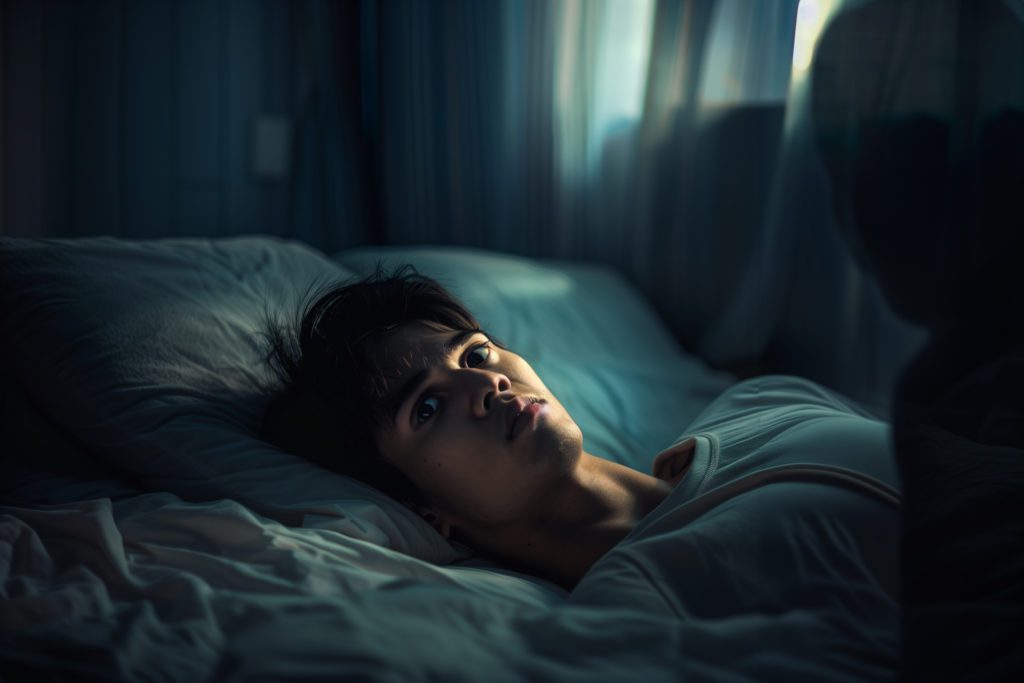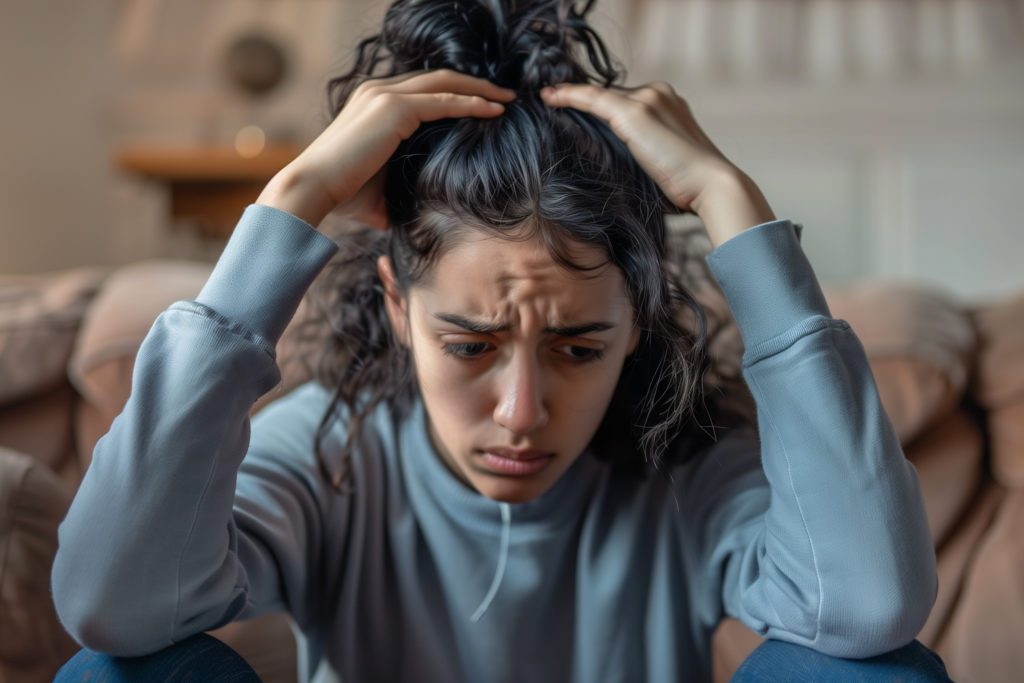
Sleep Paralysis Demystified: Separating Myths from Facts
Understanding sleep paralysis, debunking common myths, and providing actionable advice for those affected.

When it comes to sleep disorders, sleep paralysis is all too often shrouded in myths and misconceptions. Our mission is to empower our users with factual information, for improved sleep hygiene and overall wellness, so we were keen to unpick the matter further.
This article aims to demystify sleep paralysis, separating the myths from the facts. We’ll also provide you with some actionable insights for if sleep paralysis is affecting you or a loved one.
What is sleep paralysis?
Sleep paralysis is a temporary inability to move or speak that occurs as you’re waking up or falling asleep. You’re fully conscious, but may feel a disconnect between your brain activity and muscle control. This state can often be accompanied by vivid hallucinations and a sense of pressure on the chest.
Sleep paralysis can certainly feel disconcerting, in particular the loss of muscle control and accompanying symptoms, which may include hallucinations, a sense of suffocation, and general panic. Let’s look at the topic more closely to establish some sleep paralysis facts!
Sleep Paralysis Myths Vs Facts
Myth 1: Sleep Paralysis is Supernatural
One of the most persistent myths about sleep paralysis is its association with supernatural entities. Tales of demonic presences and ghostly encounters during episodes are common in folklore across cultures.
However, science offers a less creepy explanation: that sleep paralysis occurs during transitions between REM sleep and wakefulness, where the brain awakens but the body remains in a state of temporary paralysis.
This disconnection can lead to vivid hallucinations which, rather than being rooted in the paranormal, are related to the way the brain generates dreams and self-awareness. As explained in Time Magazine, these experiences reflect natural disruptions to your brain’s ability to generate a unified sense of self, rather than being to do with things that go bump in the night.
Myth 2: Sleep Paralysis = Mental Health Issues
The link between sleep paralysis and mental health is often misunderstood, leading some to believe that experiencing a sleep paralysis episode means you’ve got a mental health disorder.
While it's true that sleep paralysis can be more common among individuals with mental health conditions such as PTSD, panic disorder, and anxiety (source: PubMed), it's crucial to view this within the broader context of mental health and sleep.
Rather than causing sleep paralysis per se, these conditions can disrupt normal sleep patterns, which increase the likelihood of experiencing a sleep paralysis episode. This does not mean every instance of sleep paralysis signifies a mental health issue.
Myth 3: Sleep Paralysis Can Be Deadly
The fear that sleep paralysis can lead to death is a significant source of anxiety for many, especially in cultures where the phenomenon is interpreted as a mortal threat. In Egypt, a study found that over 50% of people who experienced the condition were convinced it would eventually kill them.
However, you’ll be pleased to learn that while it may be absolutely terrifying, there is no evidence to suggest that sleep paralysis would ever be fatal.
Myth 4: It Only Occurs if You’re Sleeping on Your Back
While there’s some truth to this belief: studies have shown that sleeping in the supine position can increase the likelihood of an episode. Why? Because you’re more likely to be awoken from snoring or sleep apnea (source: Healthline).
In truth, though, sleep paralysis can occur in any sleep position. Once you understand that sleep posture is simply one of many factors that can cause sleep paralysis, you can begin to experiment with different sleeping positions to see what works best for your sleep health.
Myth 5: Sleep Paralysis is Rare
The perception of sleep paralysis as a rare occurrence adds to its mystique and fear. However, the facts are clear: research indicates that up to 30% of people may experience at least one episode of sleep paralysis in their lifetime—that’s almost a third of the population.
This statistic highlights how important it is to share information and data about sleep paralysis – if we talk about it and normalize it, we can help those affected feel less fearful and worried.
Myth 6: There is Nothing You Can Do About it
Perhaps one of the most disheartening myths about sleep paralysis is the belief that is entirely out of your control.
While it's true that genetic and environmental factors play a role—along with mental health conditions, as we’ve seen—there are several things you can do to reduce the likelihood and severity of episodes.
This article in Harvard Health suggests a number of easy-to-implement measures such as adopting a consistent sleep schedule, reducing your intake of caffeinated before bedtime, managing stress, and optimizing your sleep environment.
If sleep paralysis is still an issue, you may choose to adopt relaxation techniques such as meditation and yoga into your routine, and seek professional advice from a sleep specialist.
Conclusion
By understanding sleep paralysis through scientific explanations rather than superstition, you can make positive changes to your sleep health. This article aimed to debunk myths and provide practical advice for those experiencing sleep paralysis, emphasizing that, while unsettling, sleep paralysis is a common and generally harm-free phenomenon.
For further reading and strategies on improving your sleep hygiene, Pillow offers a range of resources and tools designed to enhance sleep quality and wellness.
FAQ
Can sleep paralysis occur during a nap?
Yes, sleep paralysis can happen during naps, especially if the nap allows the sleeper to enter REM sleep. Factors like irregular sleep patterns or sleep deprivation may increase the likelihood of experiencing sleep paralysis during a daytime nap.
Does sleep paralysis occur in all sleep stages?
Can diet or supplements influence sleep paralysis?
While no specific diet causes sleep paralysis, consuming stimulants like caffeine or sugar close to bedtime can disrupt sleep and potentially increase the risk. Magnesium or melatonin supplements may promote better sleep, reducing episodes.
Is there a genetic component to sleep paralysis?
Yes, research suggests a genetic predisposition. Individuals with a family history of sleep paralysis may have a higher likelihood of experiencing it due to inherited traits affecting sleep regulation.
Can lucid dreaming trigger sleep paralysis?
Lucid dreaming does not directly cause sleep paralysis but can make one more aware of sleep processes. For those prone to sleep paralysis, attempting lucid dreaming may increase awareness during REM transitions, potentially triggering an episode.
Can Narcolepsy or other disorders cause Sleep Paralysis?
Yes, sleep paralysis can be associated with narcolepsy, OSA or other sleep disorders that disrupt REM sleep. If episodes are frequent or severe, it may indicate an underlying condition that needs medical attention.

Written by
Georgia Austin
Senior Content Writer
Download Pillow
Get help
Press & News
Legal
Connect
X (Twitter)
Company
Copyright © Neybox Digital Ltd.



